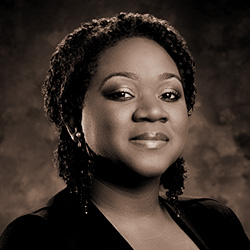Going, going, gone: The rise and fall of the BlackBerry
Throughout the 2010s, the BlackBerry was the cat’s pyjamas. Dominating the iPhone market, the name was synonymous with cutting edge innovation and stylish connectivity on the go.
However, as of this month BlackBerrys are no longer being supported. They have finally become obsolete. But why?
Background
“They always say time changes things, but you actually have to change them yourself.” - Andy Warhol
BlackBerry’s decline was pretty dramatic, especially when you consider that BlackBerry held a 33.2% smartphone market share in the UK in December 2011 (according to Statista). But just two years later, in 2013, this had shrunk to only 17.44%.
There had been some hope of a revival later that year, which even brought about an advertising slot during the Super Bowl. But by the second quarter of 2013, BlackBerry had shipped just 5.9 million phones, far fewer than the nine million new iPhones Apple sold following its launch.
As the mobile world changed with iOS and Android, BlackBerry started to post billion-dollar losses. In 2016, WhatsApp support for older phones was dropped, and by May 2021 BlackBerry smartphones only made up a tiny 0.01% of the UK smartphone market.
So what’s the latest?
BlackBerry phones exploded onto the scene almost 23 years ago with the launch of the 850 model. With its trademark full qwerty keyboard, they were ahead of the curve.
But it wasn’t to last forever. As an “expression of thanks” to its loyal fanbase, BlackBerry has continued to maintain the software, despite the fact that handsets haven’t been produced since 2016. But it’s this that has now ended.
According to the company website, BlackBerry phones "will no longer reliably function" from the 4th January, including for calling and texting.
Where did it all go wrong?
Hindsight comes with 20/20 vision of course. But it’s useful to reflect on what appears to be the three key reasons BlackBerry phones have ultimately failed.
1. Not keeping an eye on the market
BlackBerry aimed their products strongly at the business market, and the devices were designed accordingly. Real cutting-edge stuff during the early years, suddenly it was possible to manage a business on the go, thanks to the fact you could answer calls and emails as well as browse the web. Then the iPhone came along.
Apple originally had their eye on the everyday customer rather than business users, and BlackBerry therefore didn’t see it as much of a threat. But as iPhones developed, they become known and loved for their ease of use and convenient accessibility; qualities which of course business people value too.
As time went on, iPhones and other consumer-oriented products grew in popularity throughout the business market. They were soon able to do everything the BlackBerry could do and more; the demise had begun.
2. Struggling to adapt
“Being stubborn is a virtue when you’re right, it’s only a character flaw when you’re wrong.” - Chuck Noll.
In its heyday, BlackBerry’s products revolutionised instant messaging. The world hadn’t seen anything like these new mini handheld computers before and the sheer innovation kept things fresh. But ultimately, BlackBerry became stubborn - and this stubbornness didn’t do it any favours.
One example of this is with the touchscreen. In the early 2010s, the touchscreen was new but the rushed job of the BlackBerry Storm particularly saw lagging and bugs galore. It was also plagued by software problems, with users preferring the previous iterations. And while all this was going on, Samsung and Apple’s devices were becoming more mainstream. Their touchscreens and software were far superior and the market became more crowded.
It’s not just about the screen though - other features of the BlackBerry weren’t hitting the spot either. Consumers often complained of distorted audio and a camera that just didn’t keep up with expectations. While the likes of the iPhones had cameras that would soon rival DSLRs, BlackBerry doggedly continued to underestimate the camera’s importance to consumers.
3. BlackBerry’s own operating system
BlackBerry stayed extremely loyal to its operating system - but the system itself had some pretty major flaws.
Apple and Android devices offered the biggest range of apps, whereas those supported by BlackBerry’s early OS versions were much more limited. By the time it opened its own app store, it had really missed the boat. Not only that, but users didn’t find BlackBerry’s app store user-friendly, and said the layout hard was to navigate.
Essentially, smartphones have simply better kept up with consumer needs. They can do just about anything you could want them to, sadly confining BlackBerry phones to history.
Innovation and the Tax Cloud portal go hand in hand
Despite its demise, BlackBerry taught us plenty about both business and innovation. The problem simply seems to be that Apple, Samsung, Google had a clearer idea about market evolution and how best to innovate.
For companies large and small, innovation is typically very expensive. However, back in the early 2000s the UK government introduced the R&D Tax Credits scheme, allowing up to 33% of eligible R&D costs to be claimed back from HMRC. It’s incredibly generous, with all companies in all sectors able to claim. The span of projects and costs is incredibly broad too.
Making an R&D Tax Credits claim
R&D Tax Credit awards are administered either as a Corporation Tax rebate or, for loss-making companies, as a cash sum. It’s ideal for reinvestment into further R&D, but the process itself is deceptively tricky. There are many legal loopholes to jump through and you’ll want your claim to be maximised too.
By using the incredibly cost-effective Tax Cloud portal (developed by the R&D tax experts at Myriad Associates) you can complete a claim in a few simple fully-guided steps. We’ll even check it at every stage, and submit it to HMRC for you.
Why not use our Tax Cloud calculator to see what you could claim and arrange a free demo. Then sign up when you’re ready to get started or call us on 020 7360 4437. Alternatively, feel free to send us a message.
- Submitting R&D tax claims since 2001
- Strong track record spanning 20+ years delivering R&D tax credit claims
- Over £70m claimed and counting
- Industry leading specialists
- We employ technical, costing and tax experts and tax experts
- Confident of delivering value to our clients, we offer our R&D tax services on a success fee-only basis.
Meet some of the team behind Tax Cloud
 Barrie Dowsett ACMA CGMA
Chief Executive Officer
Barrie Dowsett ACMA CGMA
Chief Executive Officer
 Jillian Chambers
Technical Analyst/Writer
Jillian Chambers
Technical Analyst/Writer
 Lauren Olson
Technical Analyst Manager
Lauren Olson
Technical Analyst Manager
 Rabia Mohammad
Corporate Tax Associate
Rabia Mohammad
Corporate Tax Associate
 020 7360 4437
020 7360 4437